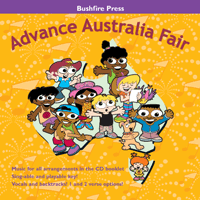 F W Boreham recognised that one of the major challenges facing Australia and the first business of its politicians in the “plastic stage of its history”[1] was “the discovery and exploitation of her immense resources”.[2] In particular, he advocated further exploration and increased mining of Australia’s mineral resources.[3]
F W Boreham recognised that one of the major challenges facing Australia and the first business of its politicians in the “plastic stage of its history”[1] was “the discovery and exploitation of her immense resources”.[2] In particular, he advocated further exploration and increased mining of Australia’s mineral resources.[3]Scientific Advancement
In 1915, when Prime Minister William M Hughes accepted responsibility for national scientific research urging that “science … must do its utmost to win the war and to develop a great continent when the war is over”, Boreham devoted five editorials to scientific themes.[4] In these editorials he noted science’s harmony with religion, its ethical demands, its ability to increase agricultural production and other ways that science might serve humanity.[5] Boreham did not uncritically embrace science and technology for, as stated at the commencement of this chapter, he expressed his awareness of the way new inventions could threaten important social values such as the uniqueness and worth of the individual. He criticised on a number of occasions the country’s lethargy in failing to seize the fish market opportunities, especially in 1919 when the northern hemisphere fishery stocks were depleted in contrast to Australia where “the great harvest of the sea is waiting for reapers”.[6]
White Elephant
Boreham was convinced that the exploitation of resources required the nation to have a greater population. In the midst of the First World War he said, “The one peculiarity about Australia—the feature that distinguishes it from every other country on the face of the planet—is the fact that we have here a sparse population scattered around the fringes of an enormous continent [making it] a … white elephant”.[7] In 1921, there was a bitter public debate about the sustainability of the continent to support a huge population. One side, some of whom dreamt of a population of 100 million, saw possibilities of British investment that needed a greater population to develop these markets. The other side, led by journalists and trade unionists, voiced the skepticism that many Australians felt about the possibility of increasing unemployment through an over-supply of workers.[8]
Populate or Perish
Under the leadership of Prime Minister Stanley M Bruce, the 1920s were deemed to be years that saw a new imperial partnership expressed in the press statement, “The United Kingdom had a surplus population; Australia had the empty spaces. All the people in high places agreed that as far as possible the newcomers should be Britishers.”[9] A few people, such as Weather Service physiographer and academic, Thomas Griffith Taylor, challenged the rhetoric of ‘boosterism’ believing that the nation’s arid climate meant that 20 million was a more realistic population level.[10] In 1921, Boreham, with an eye for further British emigration and growth in the local market, called politicians to “make Australia more populous”.[11] Even though the onset of the depression pricked the dream for large-scale immigration and agricultural schemes, Boreham repeatedly issued his plea. After the Second World War, Boreham viewed the need for population increase as being so critical that despite the influx of immigrants his watchword in a 1948 editorial was the political slogan “populate or perish”.[12]
Sentimental Motivation
While Boreham’s push for scientific advancement and population increase represented a way of Australia realising economic fulfilment and fostering international partnership, he admitted to possessing a sentimental motivation.[13] His plea for British clergy to migrate to Australia indicated that he shared Gladstone’s approach to British emigration to the colonies that was also motivated by a desire to “form the character of their inhabitants”.[14]
Geoff Pound
Image: Advance Australia Fair
[1] Boreham, Mercury, 1 January 1921.
[2] Boreham, Mercury, 3 February 1921.
[3] Boreham, Mercury, 3 February 1921.
[4] William J Lines, Taming the great south land: A history of the conquest of nature in Australia (North Sydney: Allen & Unwin, 1991), 165.
[5] Boreham, Mercury, 20 February 1915; 11 September 1915; 16 October 1915; 6 November 1915.
[6] Boreham, Mercury, 14 June 1919.
[7] Boreham, Mercury, 18 March 1916; 6 August 1938.
[8] Michael Roe, Australia, Britain, and migration 1915-1940: A study of desperate hopes (Cambridge: Cambridge University Press, 1995), 10.
[9] Argus, 12 May 1923; Clark, A history of Australia vol. 6, 224.
[10] J M Powell, A historical geography of modern Australia (Cambridge: Cambridge University Press, 1988), 129-137.
[11] Boreham, Mercury, 16 April 1921.
[12] Boreham, Mercury, 24 January 1948.
[13] Boreham, Mercury, 2 May 1914.
[14] Bebbington, William Ewart Gladstone, 107.


